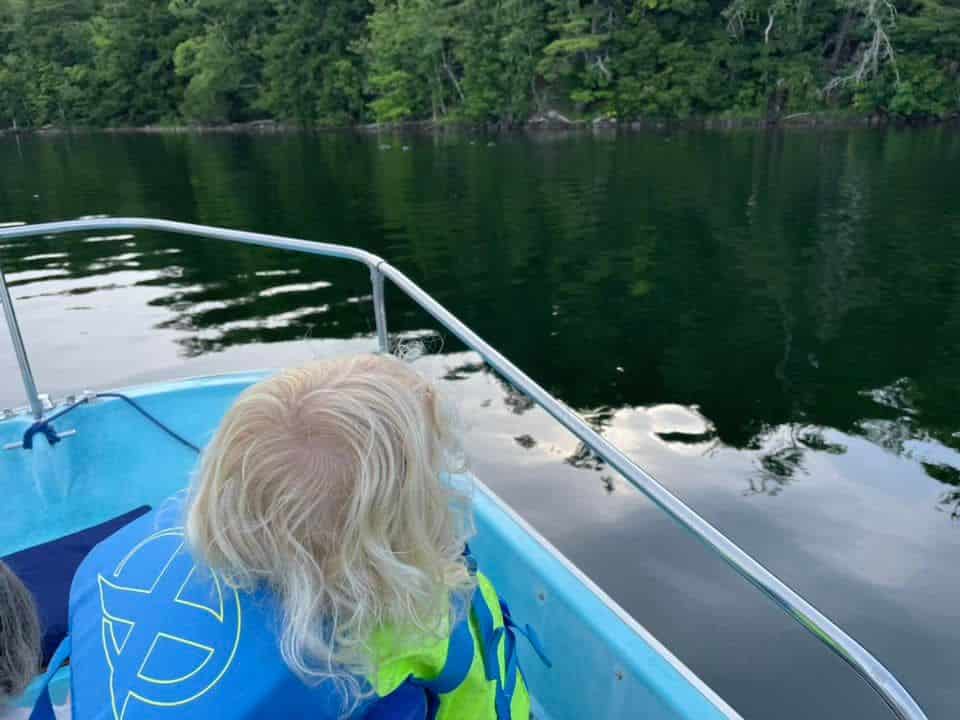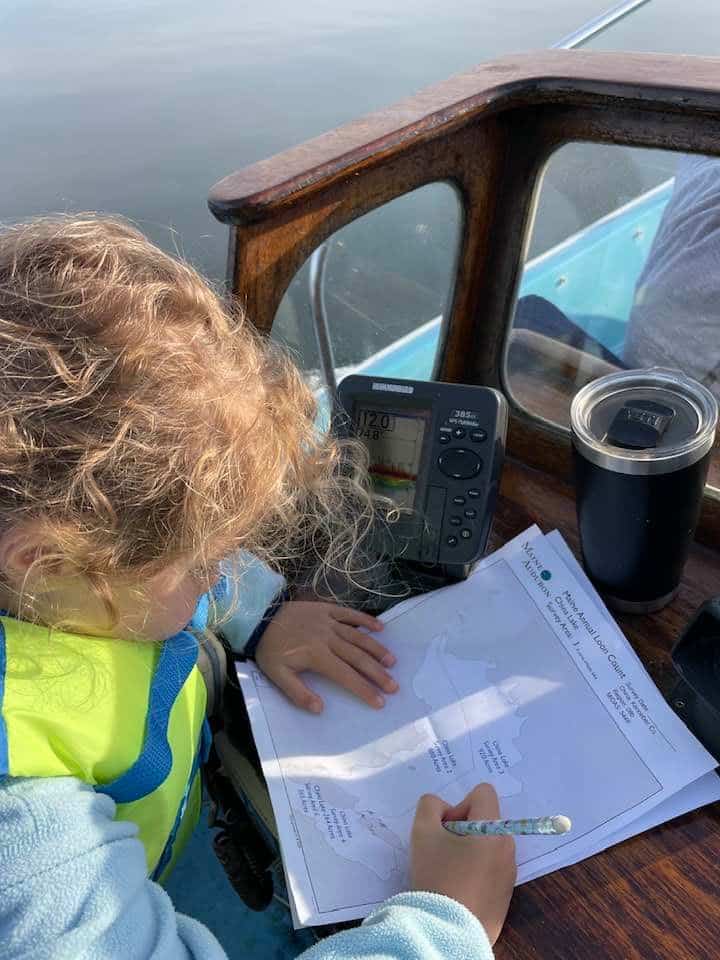
My loon-count crew was ready with time to spare, fortified with Fruit Loops and cranberry juice (I know it’s a sugar bomb, but hey, we’re grandparents). I spread the map on the console of the boat, shoved off from the dock, and headed out to do my part for loon science on sector 3 of China Lake.
Again.
It’s been nearly a quarter-century since I started scanning our lake’s waters for loons. Beginning at 0700 hours sharp, I’ve motored annually across the lake’s West Basin as the sun lifted above the eastern horizon, as rain fell, as mist hung heavily, as fog lifted—or not—and loons emerged from the murk. I’ve counted alone, with my kids, for that half-hour seeing Maine’s iconic waterfowl with renewed intensity and appreciation.
Especially this year.
The crew was ages 6 and almost 3, and I surveyed the waters over two blonde, curly heads. They perched in the bow, or on their grandmother’s lap, as two loons surfaced at 6:55 at the starting line. We marked them on our official Maine Audubon map (and, in the interest of sound science, erased them later) like we were taking a few swings in the on-deck circle.
And then we were off.
A flying loon headed west. Two more diving in a cove to the north. A group of five idling ahead of us, lingering long enough for our older counter to try a sketch. Two more coming into view as we continued southwest. The map filled with A’s [for Adults] and carefully noted times with big penciled numbers.
Like the ticking clock on a game show, the half-hour wound down. Near the landing in East Vassalboro, we huddled on the boat and added them up. Eight in the water, one in the air. Alas, to the rookie counters’ disappointment, no chicks in Sector 3.
We came about and skimmed our way home, pausing to chat with another counter, then eased up to the dock. Promised doughnuts awaited. (I know, more sugar).
Later that morning, I filled out the second page of the report: weather conditions, sightings, other observations. I know this last part was supposed to be about nest locations, any harassment by boaters, lake conditions, but I wish there had been another line on the form.
Baton passed. Check.
This rite of passage for lake and loon lovers seems all the more important this year. Climate change, droughts, record-high temperatures, reservoirs drying up. The next generation may not be getting much good news these days but in this small part of Maine, the loons were there to be counted.
And they should be there in the future, fed by some of the alewives that arrived in the lake this spring, their access and egress undammed for the first time since 1783. They stream under our dock by the thousands.
Later that day, the doughnut-fueled crew tried unsuccessfully to catch the alewives barehanded. They watched from the water as a family of mallards paddled past. Bald eagles flew overhead and a bass fisherman worked the shoreline, landing a big large-mouth and hefting it onto a scale.
And then a loon surfaced thirty feet away, seeming to watch us with its amber eyes. The loon counters scrambled for the boat and the map, in their view the survey of these beautiful creatures still going long after this year’s session ended.
Which it will be, one early morning baton-pass at a time.

